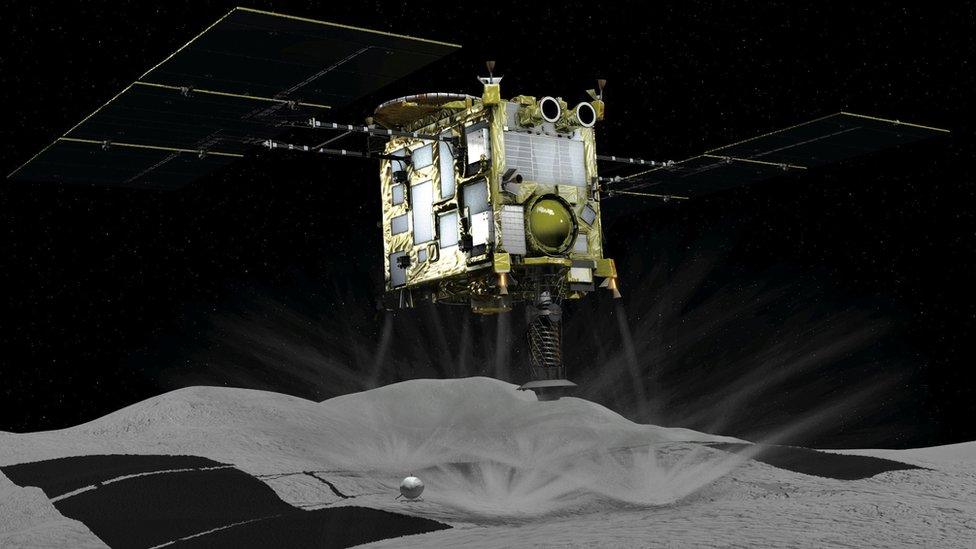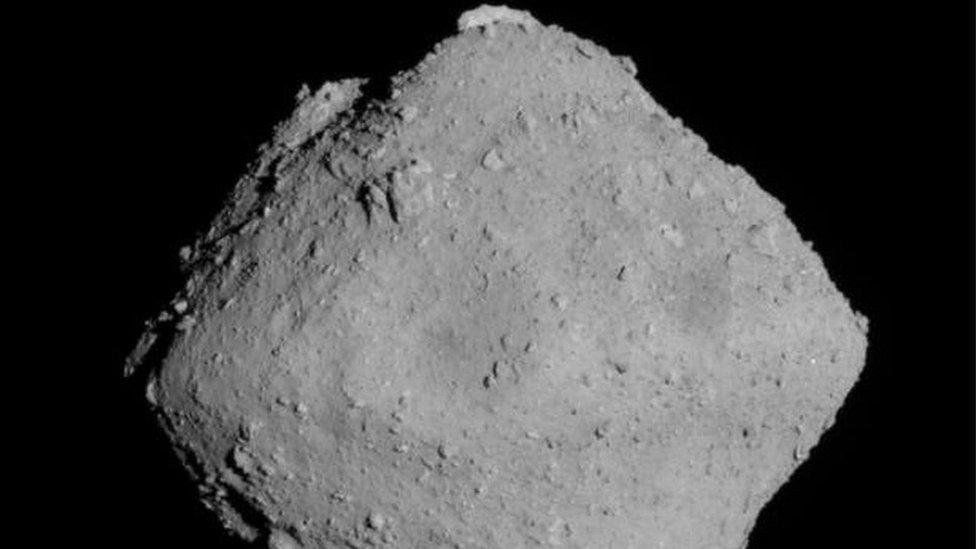Japanese spacecraft Hayabusa 2 lands on asteroid Ryugu
- Published
- comments

A Japanese spacecraft is grabbing dust from an asteroid hurtling through space 151 million miles from Earth.
It's the second time that the craft called Hayabusa 2 has taken samples from the distant asteroid called Ryugu. It's part of a mission to help explore the origins of the solar system.
The Japan Aerospace Exploration Agency (JAXA) announced the news on their social media.
"The state of the spacecraft is normal and the touchdown sequence was performed as scheduled. Project Manager Tsuda has declared that the 2nd touchdown was a success!"
Launched in 2014, the spacecraft has been floating around the asteroid for a year where it has been getting samples of the space rock.
Hayabusa 2 got its first samples back in February and the scientific team behind the project decided they would get more before sending the craft home.
This time, the spacecraft blasted a hole into the surface of Ryugu. The explosion threw up rock, dust and debris that Hayabusa 2 is now collecting.
The underground rock is important because it hasn't been changed in the harsh environment of space.
That means that the rock from under the asteroid's surface is relatively unchanged from when the solar system was first made and can provide scientists with information about how Earth and other planets were formed.
Space probe bites asteroid
JAXA said the operation, if successful, would be the first time a space probe has taken samples from below the surface of an asteroid.
Even reaching Ryugu is a huge achievement, the asteroid is just under 3,000 ft (914 meters) wide and travelling at a speed of around 12,000 mph.
Once all the samples have been collected, Hayabusa 2 will begin its journey home at the end of the year, hoping to get back to Earth by 2020.
When it gets close to the planet, it will fire a capsule with the samples towards Earth.
The samples will re-enter the atmosphere and parachute down to the ground, somewhere in the Australian outback.
- Published2 January 2019

- Published21 February 2019

